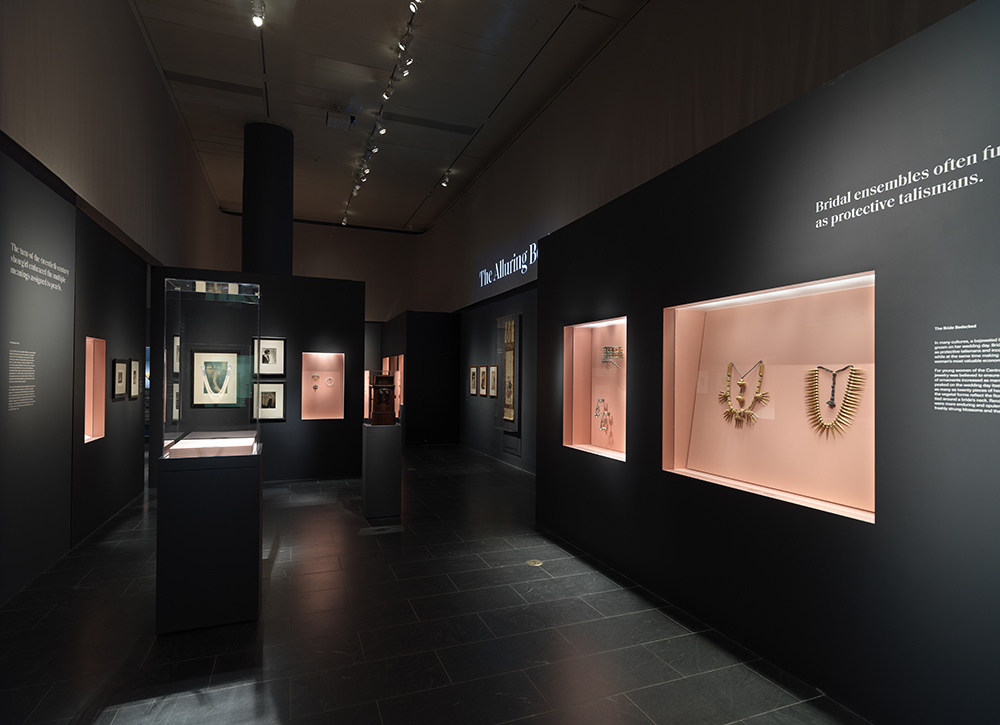
View of “Jewelry: The Body Transformed,” 2018, The Metropolitan Museum of Art, New York. Image copyright The Metropolitan Museum of Art, New York.
When I walk through museum galleries, stocked with the bravest of human efforts suspended luminescent on canvas or rising in harmonious stone, I feel covetous. And though I am awed by the aesthetic achievements before me, I also diminish them to what I would collect. I would hang that Veronese. I would like to wake to that celadon moon jar from the Joseon dynasty.
“Jewelry: The Body Transformed,” a new show at The Metropolitan Museum of Art (on view through February 24), indulges this covetousness. After all, every piece of art here is wearable. The exhibition displays more than two hundred pieces of jewelry from the Met’s own collection. The thoughtful curation and liner notes make a point I mused on while uptown: jewelry is as ancient an art form as we have. The metals and stones valued by humans often endure. Diamonds, as we know, are among the hardest substances in nature, and any silver seam is as old as the earth. Their endurance is part of their value, and because they are valued, they have been sacked and stolen again and again but less often destroyed. The serpentine logic spirals like a pair of Hellenistic armbands.
I stood beside gold Egyptian sandals meant to be worn to the afterlife, and I admired their “toe stalls,” intricate gold caps intended to preserve digits for use in the next life. Each nail is represented down to cuticles of gold, the simplicity of which is as stunning as the complexity of royal earrings from first-century Andhra Pradesh. Though aesthetics have changed since the first century, I was surprised by how little. Only the fussy parure sets left me cold, while every fiber of my avarice called out for an 1860 Italian diadem from the firm of Castellani, and combs with inlaid flowers from the so-called cemetery at Ur (in modern-day Iraq), circa 2600–2500 B.C.
Gold ear ornaments from Indonesia, hoops studded with the curling petals of blossoming flowers with stamens stinging the centers, will haunt my dreams. Here, the global north doesn’t shine particularly brighter than anywhere else, and the Celtic torque from first-century Brussels has a fascinating kinship with the ear spools of Calima (present-day Colombia), also from the first century.
The curators have displayed a tempting selection. Organized as clearly as any history essay, the exhibition and the accompanying catalogue are sifted into categories of use. The breathtaking first room, however, steals the show, suspending a collection of splendid adornments in ghostly glass displays, secured surely by all the powers of modern surveillance and lit so that the specters of the viewers appear bedecked by the jewelry displayed. This mirage is revived occasionally throughout the exhibition: a Cartier pearl necklace is positioned just so a person of approximately five foot six can appear to be wearing it. Those are the pieces that lingered best in my memory, armbands that have changed hands umpteen times, betrothal rings that have known countless fingers, each having been mine for a moment.
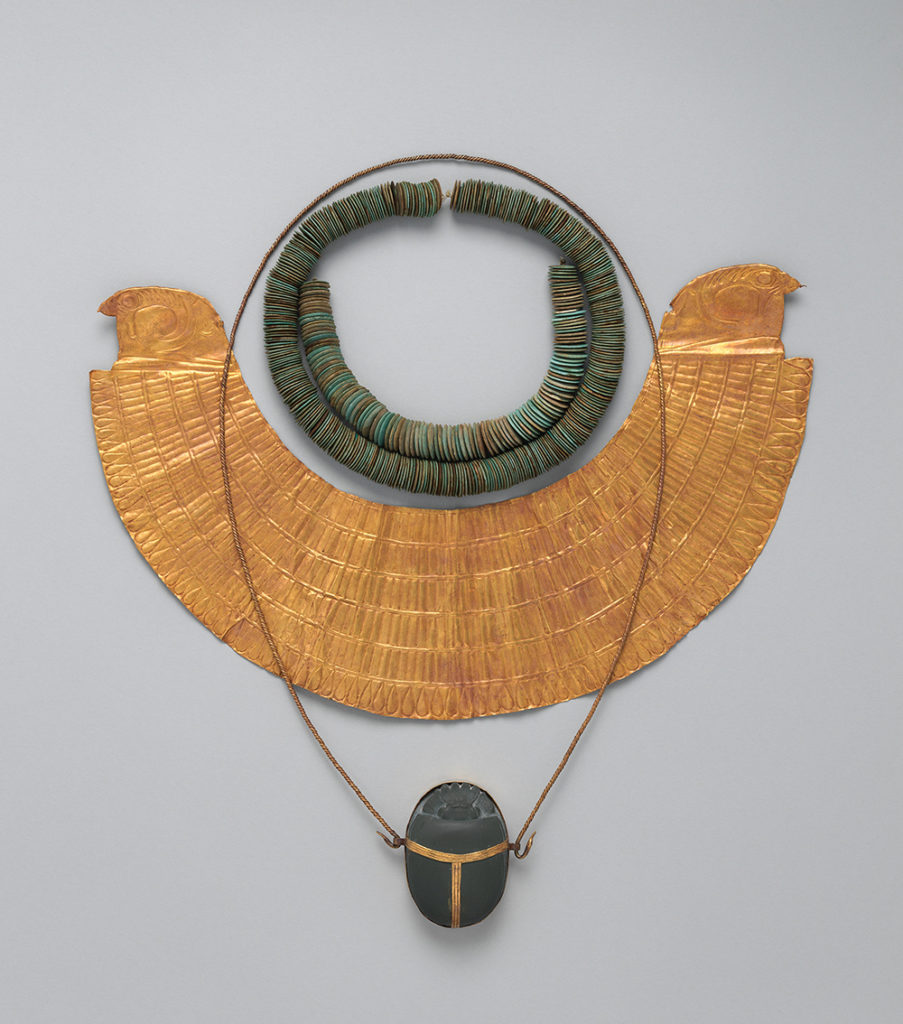
Necklace of lentoid beads, string of lentoid beads, and heart scarab of Manuwai. New Kingdom, Dynasty 18, reign of Thutmose III, ca. 1479–1425 B.C.. From Egypt, Upper Egypt, Thebes, Wadi Gabbanat el-Qurud, Wadi D, Tomb of the 3 Foreign Wives of Thutmose III. Necklace and string of beads: Egyptian blue; scarab: green stone, gold. Necklace: L. 16 1/8″; string of beads: L. 8 1/4″; scarab: 2 5/8″ x 1 7/8″ x 5/8″; L. (scarab with wire) 29 1/4″. The Metropolitan Museum of Art, Fletcher Fund, 1920 (26.8.66, .91, .67).
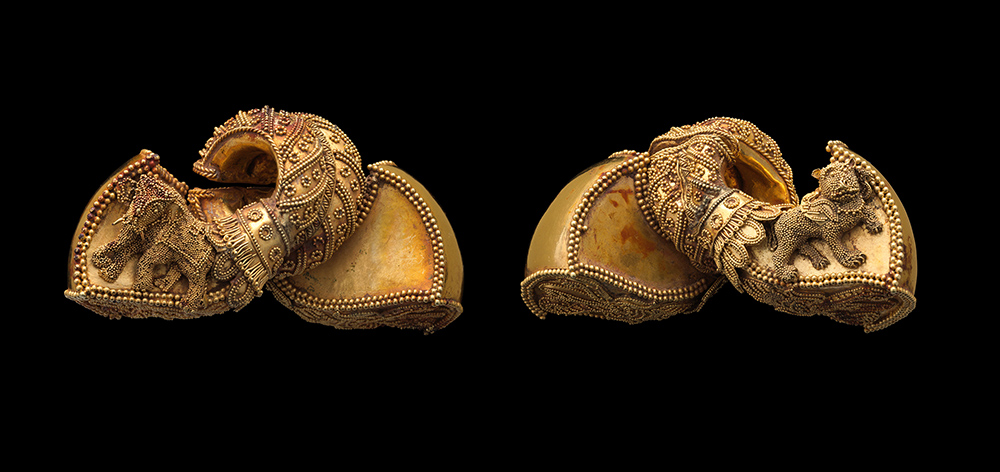
A pair of royal earrings, ca. first century B.C. India (probably Andhra Pradesh). Gold. Overall (each): 1 1/2″ x 3″ x 1 9/16″. The Metropolitan Museum of Art, gift of John and Evelyn Kossak, The Kronos Collections, 1981. (1981.398.3–.4).
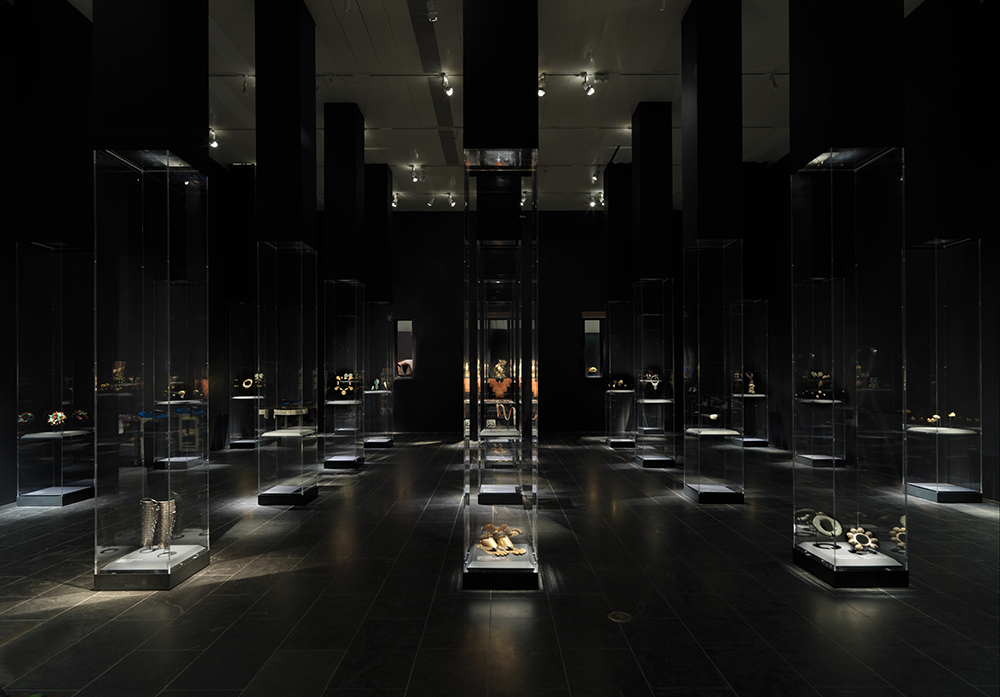
View of “Jewelry: The Body Transformed,” 2018, The Metropolitan Museum of Art, New York. Image copyright The Metropolitan Museum of Art, New York.
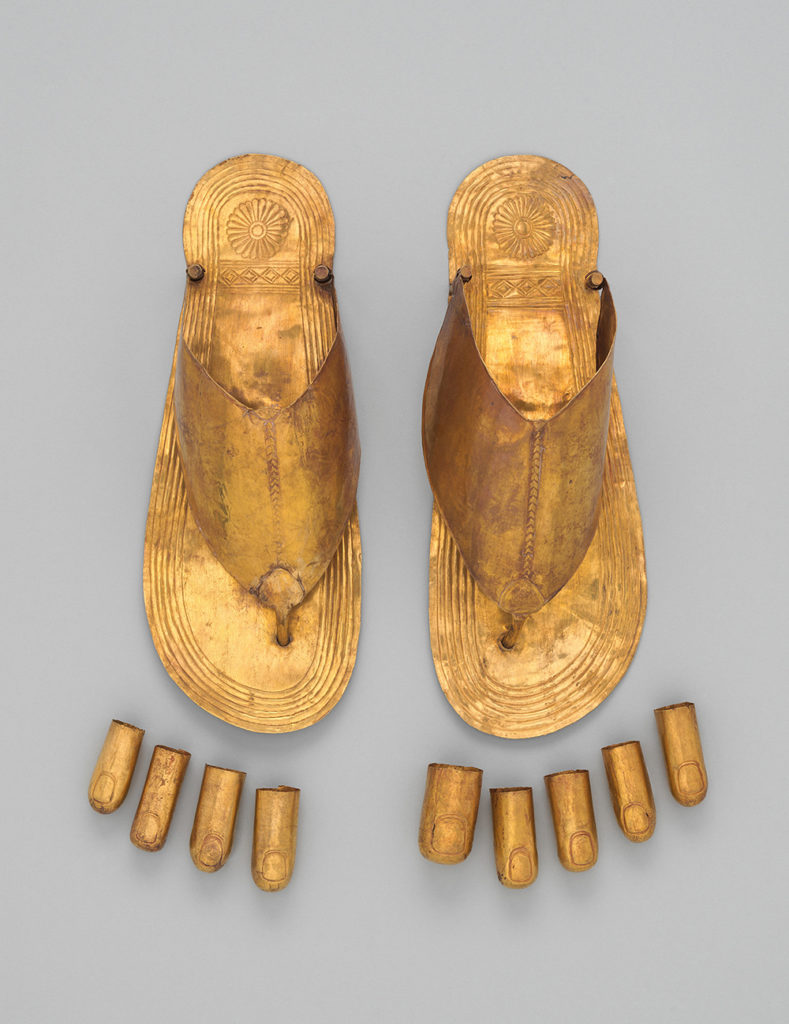
Gold sandals and toe stalls, New Kingdom, Dynasty 18, reign of Thutmose III, ca. 1479–1425 B.C. From Egypt, Upper Egypt, Thebes, Wadi Gabbanat el-Qurud, Wadi D, Tomb of the 3 Foreign Wives of Thutmose III. Gold sandals: 10 3/8″ x 3 15/16″; width at heel: 2 3/4″. The Metropolitan Museum of Art, Fletcher Fund, 1922 (26.8.148a, b), and Fletcher Fund, 1921–22 (26.8.185-189, .193–194, .198–199).
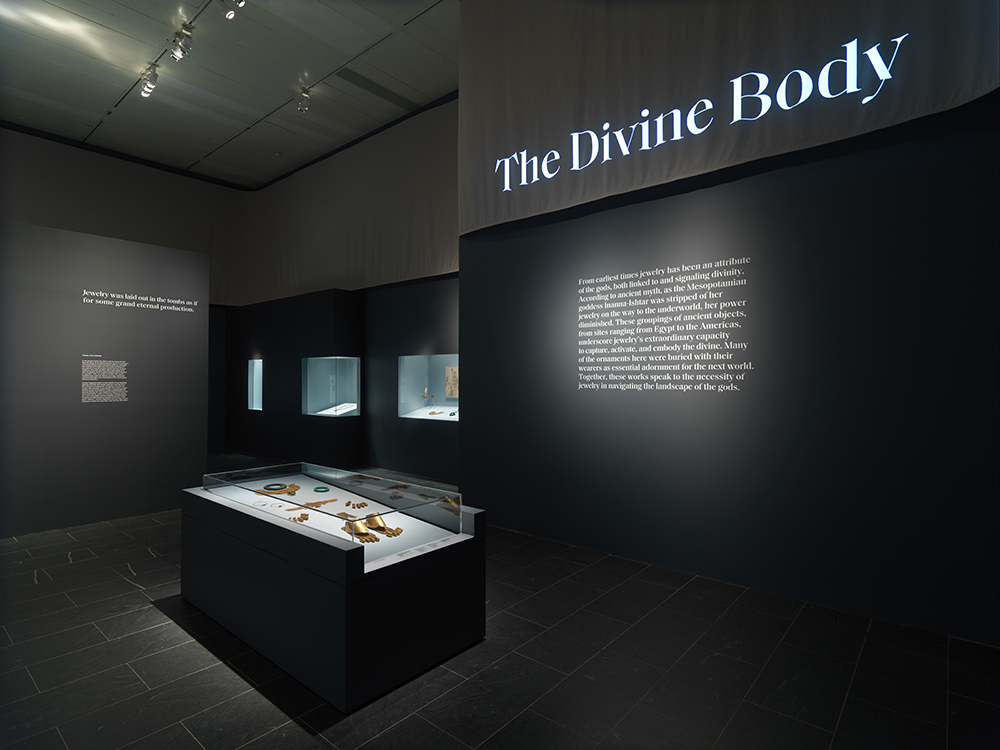
View of “Jewelry: The Body Transformed,” 2018, The Metropolitan Museum of Art, New York. Image copyright The Metropolitan Museum of Art, New York.
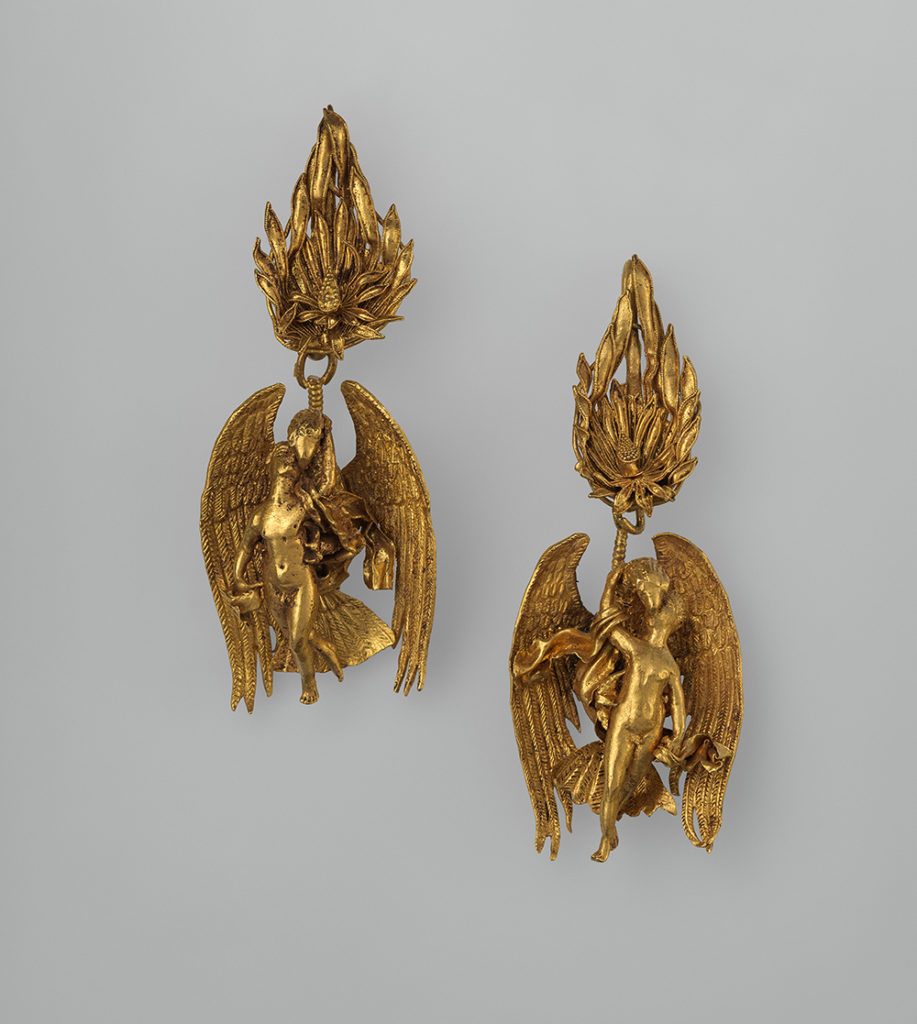
Pair of gold earrings with Ganymede and the eagle. Hellenistic, ca. 330–300 B.C. Gold, rock crystal, emerald. Height: 2 3/8″. The Metropolitan Museum of Art, Harris Brisbane Dick Fund, 1937 (37.11.9, .10).
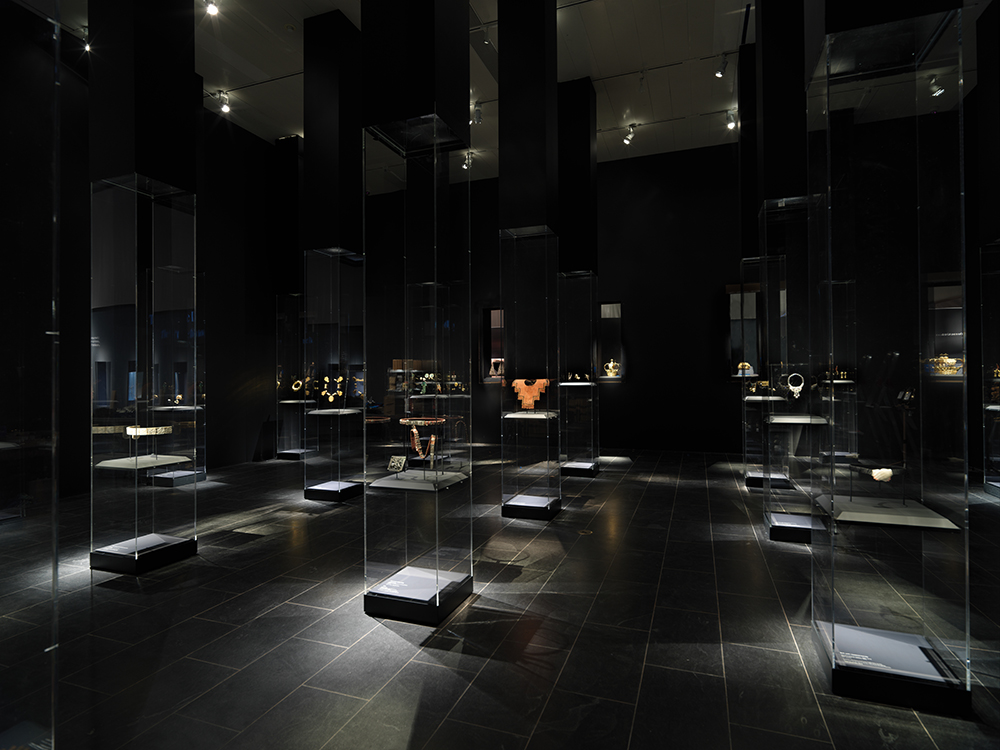
View of “Jewelry: The Body Transformed,” 2018, The Metropolitan Museum of Art, New York. Image copyright The Metropolitan Museum of Art, New York.
Julia Berick is a writer who lives in New York. She works at The Paris Review.
from The Paris Review https://ift.tt/2ALKJeA
Comments
Post a Comment